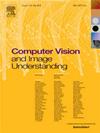UUD-Fusion:通过生成扩散模型实现无监督通用图像融合方法
IF 4.3
3区 计算机科学
Q2 COMPUTER SCIENCE, ARTIFICIAL INTELLIGENCE
引用次数: 0
摘要
图像融合是图像处理领域的一个经典问题,其解决方案通常不是唯一的。常见的图像融合方法只能根据源图像对生成固定的融合结果。这些方法往往只适用于特定的任务,而且计算成本较高。因此,本文提出了一种具有生成扩散模型的两阶段无监督通用图像融合方法,称为 UUD-Fusion。在第一阶段,设计了一种基于初始融合结果的策略,以减轻计算工作量。在第二阶段,设计了两种基于生成扩散模型的新型采样算法。融合序列生成算法(FSGA)通过迭代采样在解空间中搜索一系列解。融合图像增强算法(FIEA)大大提高了融合图像的质量。对不同模式的多个数据集进行的定性和定量评估表明,UUD-Fusion 具有强大的通用性和有效性。它能够解决不同的融合问题,包括多焦点图像融合任务、多曝光图像融合任务、红外和可见光融合任务以及医学图像融合任务。所提出的方法优于目前最先进的方法。我们的代码可在 https://github.com/xiangxiang-wang/UUD-Fusion 公开获取。本文章由计算机程序翻译,如有差异,请以英文原文为准。
UUD-Fusion: An unsupervised universal image fusion approach via generative diffusion model
Image fusion is a classical problem in the field of image processing whose solutions are usually not unique. The common image fusion methods can only generate a fixed fusion result based on the source image pairs. They tend to be applicable only to a specific task and have high computational costs. Hence, in this paper, a two-stage unsupervised universal image fusion with generative diffusion model is proposed, termed as UUD-Fusion. For the first stage, a strategy based on the initial fusion results is devised to offload the computational effort. For the second stage, two novel sampling algorithms based on generative diffusion model are designed. The fusion sequence generation algorithm (FSGA) searches for a series of solutions in the solution space by iterative sampling. The fusion image enhancement algorithm (FIEA) greatly improves the quality of the fused images. Qualitative and quantitative evaluations of multiple datasets with different modalities demonstrate the great versatility and effectiveness of UUD-Fusion. It is capable of solving different fusion problems, including multi-focus image fusion task, multi-exposure image fusion task, infrared and visible fusion task, and medical image fusion task. The proposed approach is superior to current state-of-the-art methods. Our code is publicly available at https://github.com/xiangxiang-wang/UUD-Fusion.
求助全文
通过发布文献求助,成功后即可免费获取论文全文。
去求助
来源期刊

Computer Vision and Image Understanding
工程技术-工程:电子与电气
CiteScore
7.80
自引率
4.40%
发文量
112
审稿时长
79 days
期刊介绍:
The central focus of this journal is the computer analysis of pictorial information. Computer Vision and Image Understanding publishes papers covering all aspects of image analysis from the low-level, iconic processes of early vision to the high-level, symbolic processes of recognition and interpretation. A wide range of topics in the image understanding area is covered, including papers offering insights that differ from predominant views.
Research Areas Include:
• Theory
• Early vision
• Data structures and representations
• Shape
• Range
• Motion
• Matching and recognition
• Architecture and languages
• Vision systems
 求助内容:
求助内容: 应助结果提醒方式:
应助结果提醒方式:


